- 1College of Information Science and Engineering, Northeastern University, Shenyang, China
- 2College of Economics and Management, Shenyang Agricultural University, Shenyang, China
- 3Key Laboratory of Intelligent Computing in Medical Image, Ministry of Education, Northeastern University, Shenyang, China
Currently, cardiovascular and cerebrovascular diseases have become serious global health problems related to their high incidence and fatality rate. Some patients with cardiovascular cerebro-cardiovascular diseases even may face motor or cognitive dysfunction after surgery. In recent years, human–computer interactive systems with artificial intelligence have become an important part of human well-being because they enable novel forms of rehabilitation therapies. We propose an interactive game utilizing real-time skeleton-based hand gesture recognition, which aims to assist rehabilitation exercises by improving the hand-eye coordination of the patients during a game-like experience. For this purpose, we propose a lightweight residual graph convolutional architecture for hand gesture recognition. Furthermore, we designed the whole system using the proposed gesture recognition module and some third-party modules. Finally, some participants were invited to test our system and most of them showed an improvement in their passing rate of the game during the test process.
1 Introduction
We have previously reported research in the field of tech-assisted rehabilitation (Liu et al., 2019; Tan et al., 2021; Sun and Wu, 2022). Cardiovascular and cerebrovascular diseases have become serious global health problems because of their high incidence and fatality rate. Cardiovascular disease is the leading cause of death, accounting for about 34% of all deaths worldwide (Anteneh et al., 2021), followed by stroke, a typical cerebrovascular disease, accounting for 11.6% (Kisa et al., 2021). Even after treatment, both cardiovascular and cerebrovascular disease may lead to motor or cognitive dysfunction, which needs a long period of rehabilitation (Berthier, 2005; Pattanshetty et al., 2015). Aerobic and strength training programs can improve cognitive performance even during the chronic stroke phase (Oberlin et al., 2017). For patients, a rehabilitation process combining motor and cognitive training has the potential to enhance their chance of recovery and rebuild their ability to take care of themselves.
In the last few years, an increasing trend in the innovation of rehabilitation methods using new technology to make rehabilitation processes more efficient has emerged. A good rehabilitation method should be user-friendly and interesting, so that patients may engage in the process and have a good time. Human–computer interactive systems free the patients from having to travel to rehabilitation clinics and offer them an opportunity to do these exercises at home. Because patients might perform the exercises casually or incorrectly in a home-based environment, many advances in technology have been leveraged to make the process more immersive, such as 3D gaming (Nasri et al., 2020) and virtual reality (VR) (Rincon et al., 2016).
This article proposes an interactive game controlled by 10 hand gestures for people, who suffer from limitations in daily life caused by aging or a health condition and thus want to strengthen their hand–eye coordination or do brain exercises. Our contributions can be summarized as follows:
• A rehabilitation game that leverages artificial intelligence (AI) (hand gesture recognition and character recognition).
• A network architecture for real-time skeleton-based hand gesture recognition.
The article is organized as follows: Section 2 reviews the state-of-the-art rehabilitation methods with technological assistance and hand gesture recognition approaches. Section 3 describes the details of the interactive game. This section also describes the network architecture and introduces the whole system we designed to keep the application more reliable. Section 4 presents more details about the experimental process and the results obtained. In Section 5, we report the study conclusions and provide future research directions.
2 Related work
2.1 Rehabilitation system
Conventional rehabilitation utilizes methods including the mini-mental state examination (MMSE), neurobehavioral cognitive status examination, Loewenstein occupation therapy cognitive assessment, and Wechsler memory scale to train and evaluate rehabilitation. Some of these use real cards to train the patients and often ask them to choose the correct card or sort them in order. These approaches require a long intervention cycle and are difficult for patients to maintain good exercise independence for a long time.
With the development of computer technology, the PC has become an auxiliary tool in cognitive rehabilitation training. In the beginning, it only used simple interactive logic to guide patients through rehabilitation (Hofmann et al., 1996a). In 1996, Hofmann’s team introduced computer graphics into cognitive training (Hofmann et al., 1996b), making the program more interactive with colored images. The rapid development of computer graphics and human–computer interactions has led to more visual and audio usage in rehabilitation systems. The newest rehabilitation methods leverage AI and VR technology. A system with AI can recognize a patient’s behavior, such as hand gestures through vision or sensor data, which makes human–computer interactions more natural and convenient. Relatively, a system with VR allows patients to do rehabilitation exercises in any location, with an insignificant difference from the real world.
2.2 Hand gesture recognition
According to the type of input, methods of hand gesture recognition can be classified into two categories: image-based methods and hand skeleton-based methods. The former adopts image sequences, whereas the latter uses sequences of hand joints as input. Compared with image-based methods, hand skeleton-based methods relieve the difficulty in recognizing a cluttered background, and requires lower computation cost, thus enabling real-time hand gesture recognition to be installed on small devices (Zhang et al., 2020). However, a skeleton-based approach needs additional tools to extract the hand skeleton accurately.
According to the method used to extract features, hand gesture recognition methods can also be classified into two categories: hand-crafted feature-based methods and end-to-end-based methods. The former encodes the input data into handcrafted features, such as joint angle similarities (Ohn-Bar and Trivedi, 2013) and time sequence similarity (Plouffe and Cretu, 2016). The former encodes the sequences of joints into embedding vectors and often feeds them into deep-learning architecture, like recurrent neural networks (RNNs) or convolutional neural networks (CNNs), to extract deep features. Graph convolutional network (GCN) also has an important role in skeleton-based hand gesture recognition. Many studies have demonstrated the effectiveness of GCN using the skeleton as a graph structure (Yan et al., 2018; Zhang et al., 2020).
3 Methods and materials
3.1 Graph convolutional network architecture
Because the input data were acquired as a sequence of 21 hand joints, which is a natural graph structure, we chose to work with a graph convolutional network. For each hand with N joints, we defined a skeleton graph
The topological relationship of nodes in the hand skeleton graph is illustrated in Figure 1. The edge-connecting nodes
where
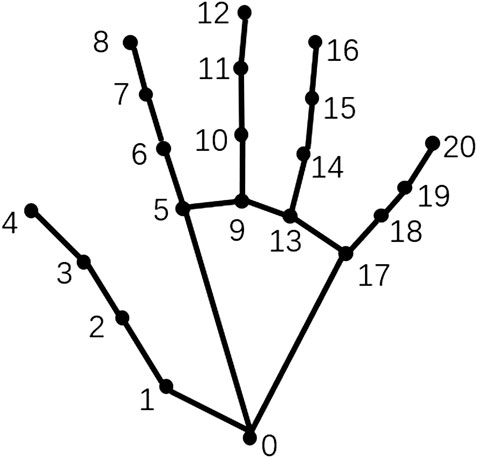
FIGURE 1. The hand skeleton graph. The nodes denote the hand joints and the edges denote the connections.
Before sending the data into the model, we preprocessed the data by setting the origin of the coordinates in the palm (midpoint between
Figure 2 illustrates our proposed neural network architecture for hand gesture recognition. In this model, we implemented one graph convolutional layer with 64 channels to transform the input 3-channel data into a 64-channel vector. This was followed by two graph convolutional units with the residual mechanism, which requires making a straight connection between the input and output of every unit (Figure 2). This is effective at resolving gradient disappearance. Each unit has two layers of graph convolution with 64 channels of output. Finally, we fed the feature vector into a graph convolutional layer with 10 channels to match the number of gesture categories. We used softmax to calculate the probability of each class. The architecture described is shown in Figure 2.

FIGURE 2. Illustration of our graph convolutional network architecture. The input is the coordinates of 21 hand joints. The two side paths that both bypass two 64-channel GCN, bring residual mechanism to our architecture.
3.2 Rehabilitation game experience
We created an interactive game controlled by hand gestures. This game utilizes a camera to recognize the hand behavior of the player and motivate the player to do air writing. It provides a hand–brain combined exercise and facilitates the rehabilitation process.
At the beginning of the game, two hand gestures were given by the computer to control an invisible pen to draw in the air (by generating a line or undoing a line). The player is required to control the pen correctly to complete a Chinese character. The system displays the player’s finger movements as they write and show the recognition result after they finish handwriting (Figure 3).
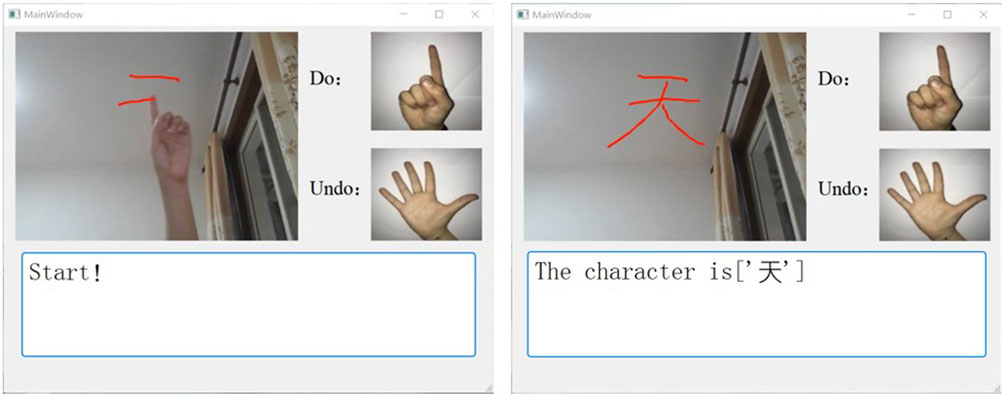
FIGURE 3. Illustration of one example of the rehabilitation game experience. (A) shows the process of writing in the air. (B) shows the result of the character recognition.
3.3 Design of the rehabilitation system
The system obtains visual images from the computer camera and communicates with users through an interface. The backend of the system is composed of a hand joint detection module, a gesture recognition module, a trajectory processing module, and a character recognition module. The visual image is first sent to the hand joint detection module and transformed into 3D coordinates of 21 hand joints. Then, the gesture recognition module identifies the specific gesture category. The trajectory processing module controls the generation of handwriting according to the hand behavior of the player. After that, it also performs Bezier smoothing and then passes the image with the completed character to the next module. Finally, the character recognition module recognizes the image with the character and delivers them back to the interactive interface, which will guide the player to interact further via the camera. The system described is shown in Figure 4.
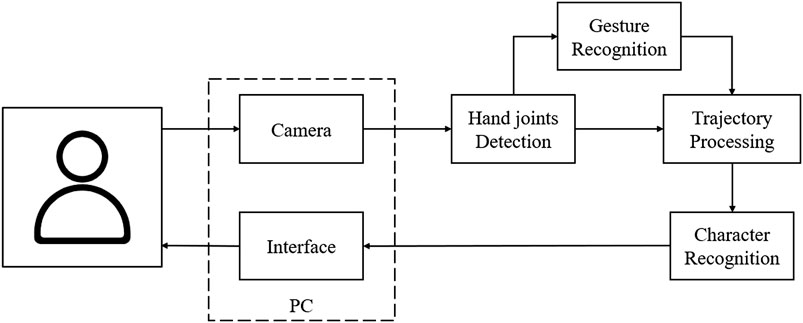
FIGURE 4. Designed diagram of the proposed system. Each block denotes a single module in our system. The two modules in the dotted box belong to a PC.
4 Experiments and results
In this section, we evaluate the performance of our model for skeleton-based action recognition. We used the American Sign Language Digits Dataset (Mavi, 2020) in our experiments. This consists of 2062 RGB pictures labeled by 10 gesture classes (from gesture “0” to “9”). These pictures are taken from 218 different students, making the hand features to be learned more diverse. We implemented a 5-fold cross-validation technique in our experiments, and they were conducted via a GeForce GTX 1650 GPU. Some examples of the dataset images are shown in Figure 5.
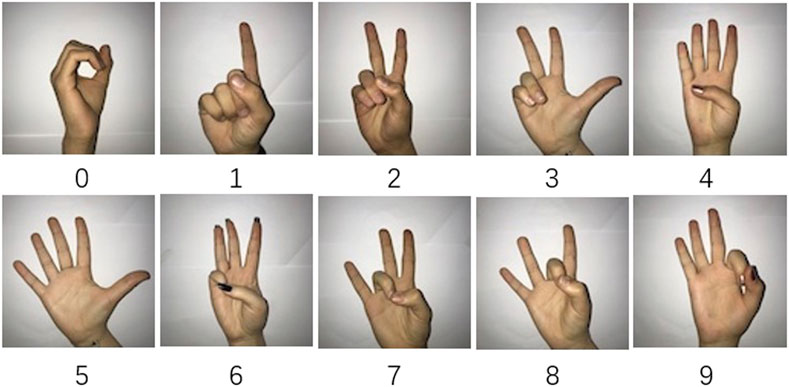
FIGURE 5. Samples of the dataset. It consists of 2062 RGB pictures labeled by 10 gesture classes (from gesture “0” to “9”).
We used cross-entropy as a loss function. The models were learned using a stochastic gradient descent with a learning rate of 0.001. We decayed the learning rate to 0.9 after every 30 epochs. To restrain extreme weights, we implemented L1 regularization with a parameter of 5e-3 and a weight decay (L2 regularization) with a parameter of 1e-4.
Our cross-validation strategy is as follows: in each round, we used 4 folds of data for training and 1 fold of data for validation. This process lasts for 5 rounds during each epoch to ensure every fold is chosen as validation data at least once. In this case, the loss and accuracy of one epoch are calculated as the average loss and accuracy of 5 rounds. The model is trained for 500 epochs. During the training period, both the train loss and validation loss decrease continuously, indicating the network is trained properly. After about 200 epochs, the loss value becomes stable. The validation accuracy peaked at 99.03%, with an insignificant difference in training accuracy (Figure 6). As shown in the confusion matrix (Figure 7) we recorded, the system was reasonably capable of classifying different hand gestures from “0” to “9.”
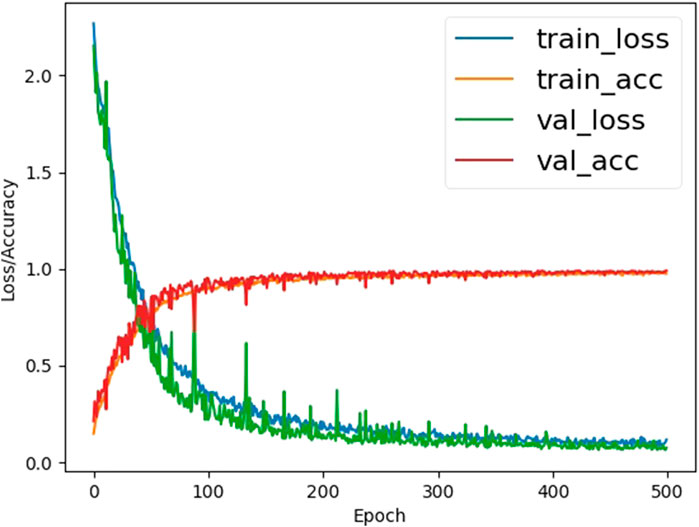
FIGURE 6. Loss and accuracy graph of the training process. The horizontal axis represents epoch and the vertical axis represents loss and accuracy value.
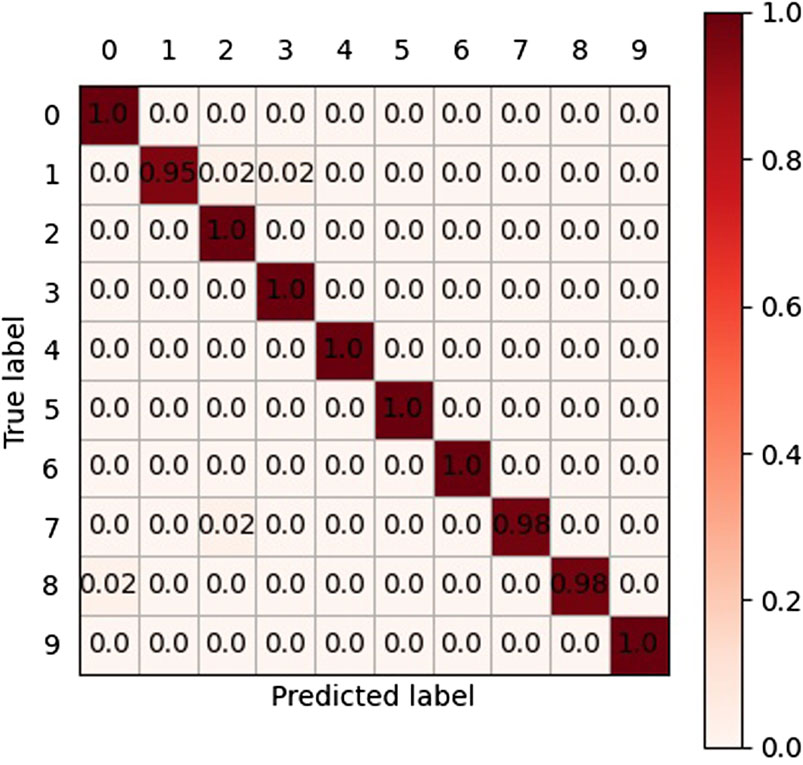
FIGURE 7. Chaotic matrix of all the samples in the test experiment. The diagonal values of the matrix are the rates of correct classifications, while the non-diagonal values are the rates of wrong classifications.
An ablation experiment was performed to better show the effect of the residual mechanism in our architecture (Table 1). The difference between the Naive model and Residual model was whether there was a forward path from the input to the output of each graph convolution unit. The FPS indicates how many frames can be processed per second. According to the results, the residual module improved the recognition accuracy by 1% while maintaining a fast processing speed and a small size. The architecture is relatively lightweight because the prediction cost of each gesture is about 6 ms and the size of the model is only 72.5 KB. This enables the game to support many small devices, which usually do not have enough memory, and to calculate the performance required to support an AI application.
Comparisons have been made between our model and other state-of-the-art models (Table 2). The first CNN (Mavi, 2020) is a convolution network with more convolution layers than MVGG-5 and less than MVGG-9 architecture. MobileNetV2 (Dayal et al., 2021) is a state-of-the-art lightweight CNN. The second CNN (Dayal et al., 2021) is a memory-efficient convolution network based on a bottleneck module, specifically designed for edge computing systems. According to Table 2, using the same dataset, the accuracy of our model is comparable to state-of-the-art models, although our model has a significant advantage in model size.
The system has been tested by four participants. All subjects were given instructions before playing and were allowed to play several rounds to become familiar with the rules. The participants were required to write 12 characters correctly in each round of the test by using their hand behavior in front of the system camera. They needed to write the indicated character as clearly as possible to ensure it could be recognized by the word recognition module. There were several minutes of rest between every two rounds. Their passing rates in each round and their opinions on the game experience are recorded in Table 3. According to the results, most of the subjects showed an improvement in the passing rate during five rounds of testing. However, it seems to be hard to reach a passing rate of 100% because of difficulty in writing in the air and some problems in the third-party word recognition module, which can be substituted and improved. Despite this, all the subjects agreed that the game experience was smooth and interesting.
5 Conclusion
This work proposes an interactive game and a human–computer interaction system for rehabilitation usage. We also propose a new residual graph convolution structure for skeleton-based gesture recognition. The model was trained for the recognition of 10 static hand gestures and was evaluated after the experiments. The system achieved 99.03% validation accuracy and maintained a relatively small size of 72.5 KB. The experimental results demonstrated that our model was sufficiently accurate as a gesture recognition system and that the game has the potential to be extended for rehabilitation usage. Four participants were invited to test this interactive game, and most subjects showed an improvement and interest during the test.
We should consider more motivational rewards and better hand gesture recognition models for the rehabilitation game. Additionally, the interactive process should be enhanced to be more smooth and interesting.
Data availability statement
Publicly available datasets were analyzed in this study. These data can be found at: https://github.com/ardamavi/Sign-Language-Digits-Dataset/.
Author contributions
Authors contributed as follows: study conception, JC; application conception, SZ; study supervision and funding acquisition, SZ and WT; methodology, JC; software, JC and HM; validation, HM; investigation, JC and WT; resources, SZ and WT; writing of the original draft, JC; review and editing, XC; visualization, JC. All authors have read and agreed to the published version of the manuscript.
Funding
This work was supported by the National Natural Science Foundation of China (61971118 and 71902121), Science and Technology Plan of Liaoning Province (2021JH1/10400051), and Fundamental Research Funds for the Central Universities (N2216014).)
Acknowledgments
In the process of experiment and writing, the contributors get a lot of writing suggestions and work guidance from editors and readers, which helps us to make the content more rigorous and easier to understand. Here, we would like to express our most sincere thanks to you.
Conflict of interest
The authors declare that the research was conducted in the absence of any commercial or financial relationships that could be construed as a potential conflict of interest.
Publisher’s note
All claims expressed in this article are solely those of the authors and do not necessarily represent those of their affiliated organizations, or those of the publisher, the editors, and the reviewers. Any product that may be evaluated in this article, or claim that may be made by its manufacturer, is not guaranteed or endorsed by the publisher.
References
Anteneh Z., Lorkowski S., Banik P. (2021). Global burden of cardiovascular diseases and risk factors, 1990–2019: Update from the GBD 2019 study. J. Am. Coll. Cardiol. 76 (25), 2982–3021. doi:10.1016/j.jacc.2020.11.010
Berthier M. (2005). Poststroke aphasia: Epidemiology, pathophysiology and treatment. Drugs Aging 22, 163–182. doi:10.2165/00002512-200522020-00006
Dayal A., Paluru N., Cenkeramaddi L. R., Soumya J., Yalavarthy P. (2021). Design and implementation of deep learning based contactless authentication system using hand gestures. Electronics 10, 182. doi:10.3390/electronics10020182
Hofmann M., Hock C., Kühler A., MüllerSpahn F., Kuhler A. (1996a). Interactive computer-based cognitive training in patients with alzheimer's disease. J. Psychiatr. Res. 30 (6), 493–501. doi:10.1016/s0022-3956(96)00036-2
Hofmann M., Hock C., Müller-Spahn F. (1996b). Computer-based cognitive training in Alzheimer's disease patients. Ann. N. Y. Acad. Sci. 777, 249–254. doi:10.1111/j.1749-6632.1996.tb34427.x
Kisa A., Kisa S., Collaborators G. B. D., Oancea B., Abu-Zaid A., Samy A. (2021). Global, regional, and national burden of stroke and its risk factors, 1990–2019: A systematic analysis for the global burden of disease study 2019. Lancet Neurology 20(10), 795-820. doi:10.1016/S1474-4422(21)00252-0
Liu Y., Tan W., Chen C., Liu C., Yang J., Zhang Y. (2019). A review of the application of virtual reality technology in the diagnosis and treatment of cognitive impairment. Front. Aging Neurosci. 11, 280. doi:10.3389/fnagi.2019.00280
Mavi A. (2020). A new dataset and proposed convolutional neural network architecture for classification of American Sign Language Digits. arXiv:2011.08927 [cs.CV] https://arxiv.org/abs/2011.08927.
Nasri N., Ortsescolano S., Cazorla M. (2020). An semg-controlled 3d game for rehabilitation therapies: Real-time time hand gesture recognition using deep learning techniques. Sensors 20, E6451. doi:10.3390/s20226451
Oberlin L. E., Waiwood A. M., Cumming T. B., Marsland A. L., Bernhardt J., Erickson K. I. (2017). Effects of physical activity on poststroke cognitive function: A meta-analysis of randomized controlled trials. Stroke 48 (11), 3093–3100. doi:10.1161/STROKEAHA.117.017319
Ohn-Bar E., Trivedi M. M. (2013). “Joint angles similarities and HOG2 for action recognition.” In Proceedings of the 2013 IEEE Conference on Computer Vision and Pattern Recognition Workshops. IEEE, Portland, OR, USA, doi:10.1109/CVPRW.2013.76
Pattanshetty D., Cook D., Malik S., Dunlap M. (2015). Patients with HF show high degrees of moderate to severe cognitive impairment despite normal MMSE testing. J. Cardiac Fail. 21, S3–S4. doi:10.1016/j.cardfail.2015.06.053
Plouffe G., Cretu A. M. (2016). Static and dynamic hand gesture recognition in depth data using dynamic time warping. IEEE Trans. Instrum. Meas. 65 (2), 305–316. doi:10.1109/tim.2015.2498560
Rincon A., Yamasaki H., Shimoda S. (2016). “Design of a video game for rehabilitation using motion capture, EMG analysis and virtual reality.” In Proceedings of the 2016 Int. Conf. Electron. Commun. Comput. (CONIELECOMP). Cholula, Mexico, 198–204. doi:10.1109/CONIELECOMP.2016.7438575
Sun L., Wu J. (2022). A scalable and transferable federated learning system for classifying healthcare sensor data. IEEE J. Biomed. Health Inf., 1. doi:10.1109/JBHI.2022.3171402
Tan W., Xu Y., Pan L., Liu C., Li Y., Du Y., (2021). A method of VR-EEG scene cognitive rehabilitation training. Health Inf. Sci. Syst. 9 (1), 4. doi:10.1007/s13755-020-00132-6
Yan S., Xiong Y., Lin D. (2018). “Spatial temporal graph convolutional networks for skeleton-based action recognition.” In Proceedings of the AAAI Conf. Artif. Intell., New Orleans, LA, U.S.A. doi:10.1609/aaai.v32i1.12328
Keywords: hand gesture recognition, graph convolutional network, residual mechanism, rehabilitation, human–computer interaction
Citation: Chen J, Zhao S, Meng H, Cheng X and Tan W (2022) An interactive game for rehabilitation based on real-time hand gesture recognition. Front. Physiol. 13:1028907. doi: 10.3389/fphys.2022.1028907
Received: 26 August 2022; Accepted: 07 October 2022;
Published: 26 October 2022.
Edited by:
Dingchang Zheng, Coventry University, United KingdomReviewed by:
Jing Guo, Guangdong University of Technology, ChinaLe Sun, Nanjing University of Information Science and Technology, China
Copyright © 2022 Chen, Zhao, Meng, Cheng and Tan. This is an open-access article distributed under the terms of the Creative Commons Attribution License (CC BY). The use, distribution or reproduction in other forums is permitted, provided the original author(s) and the copyright owner(s) are credited and that the original publication in this journal is cited, in accordance with accepted academic practice. No use, distribution or reproduction is permitted which does not comply with these terms.
*Correspondence: Shuying Zhao, emhhb3NodXlpbmdAaXNlLm5ldS5lZHUuY24=
 Jiang Chen
Jiang Chen Shuying Zhao1*
Shuying Zhao1* Huaning Meng
Huaning Meng Xu Cheng
Xu Cheng Wenjun Tan
Wenjun Tan

